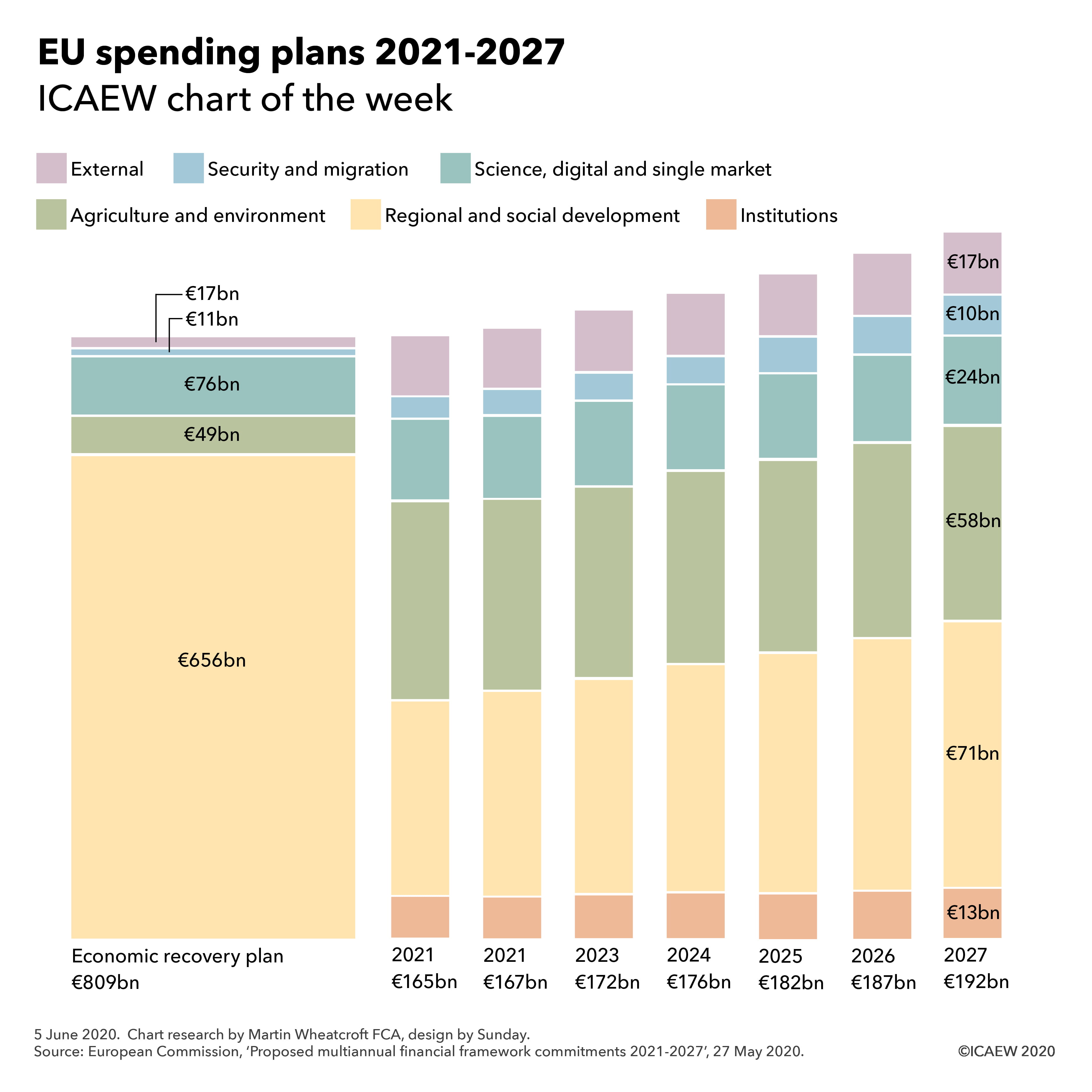
Last week the European Commission submitted its formal proposal for the EU’s multiannual financial framework for 2021 through 2027, as illustrated by the #icaewchartoftheweek. This is the outline budget that sets out the EU’s medium-term financial priorities and forms the starting point for each year’s budget.
The proposals include an annual budget for financial commitments of €167bn in 2021, rising to €192bn in 2027 - a total of €1,241bn including inflation or €1,100bn in 2018 prices. There is also a one-off €809bn (€750bn in 2018 prices) proposal for a ‘Next Generation’ economic recovery plan in the aftermath of the coronavirus pandemic, to be funded initially by borrowing.
Although the outline budget of €167bn for 2021 is smaller than the €173bn amended commitments budget for the current financial year, it is actually a significant increase once the departure of the UK is taken into account – at least assuming the UK-EU transition period is not extended for a further one or two years.
The largest area of spending is on regional and social development (‘cohesion and values’ in EU jargon), including programmes such as the European Development Fund, the European Social Fund, the Cohesion Fund and Erasmus.
This is followed by agriculture and environment, the majority of which relates to agricultural subsidies and rural development as well as environmental and climate action programmes.
Science, digital and single market includes spending on research and development (including Horizon), the European space programme, Connecting Europe (transport, energy and digitally), Digital Europe and the operation of the single market.
Security and migration bring together ‘migration and border management’ with ‘resilience, security and defence’, while External includes both the cost of development programmes (principally in neighbouring countries), humanitarian aid and pre-accession assistance for candidate countries that have applied to join the EU.
Spending on institutions mainly comprises the administrative costs of the European Commission, the European Council and the European Parliament, together with other agencies, European Schools, and pensions.
These numbers are for spending commitments, being the maximum amounts that can be authorised in any one year. In practice, commitments can cover several years and the expenditures actually occurred in each year are typically a lower amount – for example, in 2020 budget expenditures are €155bn (including spending from previous year’s commitments), less than the €173bn commitment budget.
These numbers may seem pretty large, but with a population of 448 million, the spending proposals are equivalent to an average of just over €30 a month per person over the seven years, together with a one-off stimulus package costing a further €21 a month per person if spread over the same period.